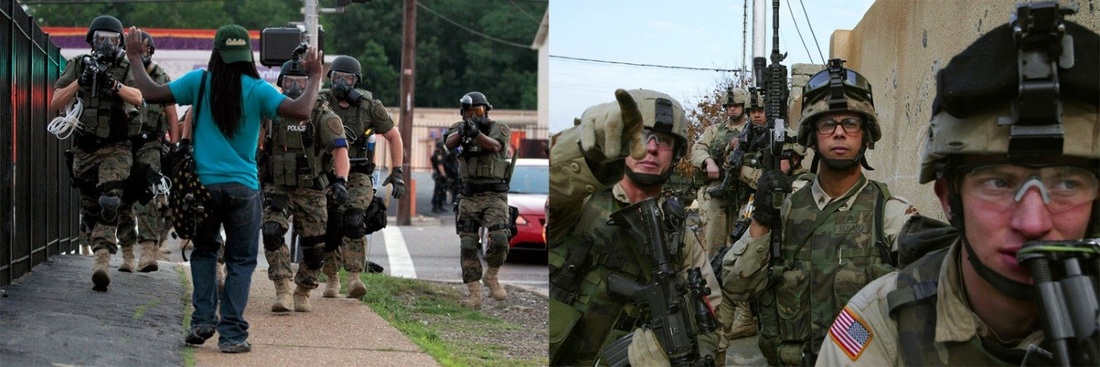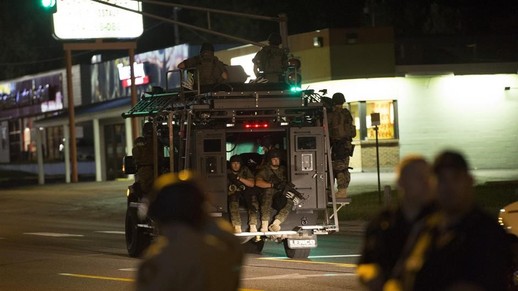Late last year I found myself before a crowd of academics at the National Conference for Higher Education in Prison, an annual gathering of colleges offering higher ed in the nation’s many correctional facilities. Stressing the social costs of mass imprisonment, I asked my well-credentialed audience whether and to what extent should today’s activists resort to litigation to effect change. Given the many universities in attendance, hailing from Washington State to Yale. I supposed much leveraging had been done to persuade teetering lawmakers to allow the all-empowering force of higher ed to pierce the penitentiary’s walls. And yet, leveraging support from politicians, I argued, is not an end-all strategy for prison reform, not when political opinions often change with the election cycle. Given this reality, I nudged my audience to at least consider supplementing their activism with litigation, an effort I believe is now possible in light of the United States Supreme Court’s ruling in Miller v. Alabama.
Decided in 2012, Miller banned life without parole for children, finding that anyone who commits a crime while under the age of 18 must be given a “meaningful opportunity to obtain release based on rehabilitation.” Representing the first time the Court had ever recognized a constitutional right to rehabilitation, Miller raises serious questions about what States must now do to rehabilitate young offenders. Is more action needed in areas of therapeutic programming and education, in ways that will equip ex-prisoners with the skills necessary to be useful citizens? In other words, do these prisoners now have a legally enforceable right to return to society with an improved chance of staying out of prison? If our answer is yes, perhaps the sixty-four-thousand-dollar question is whether Miller’s idea of rehabilitation requires college?
An underreported 2014 RAND Corporation Study found higher rates of post-release employment and a 13% drop in recidivism for those who took college classes in prison. Quite surprisingly, the utilitarianism of college for prisoners has not escaped even the most fervent crime-fighters. Allocating 7.5 million in order to pay for college in New York’s prisons, Cyrus Vance, the recently reelected Manhattan DA, put it bluntly: “[i]f we don’t provide an exit strategy for ex-offenders, they are just going to be re-offenders, . . [i]t’s just really common sense.”[i]Of course, this need for “common sense” is far more pressing in today’s economy than it was in 1972, when Basic Educational Opportunity Grants—known as Pell grants—were first made available to prisoners. A Study by the Georgetown University Center on Education and the Workforce suggests that 65 percent of the 55 million job openings projected over the next decade will require some postsecondary education and training. In the job market, those who’ve broken the law as teens already bear the stigma of a criminal conviction. Compouding that stigma by not giving them the basic education needed to earn a living wage in today’s economy would be a travesty.
A shifting consensus over the past several years has generated some support for prison college programs, mainly withing the executive branch; indeed, this is most obvious from President Obama’s reinstatement of the Pell program for prisoners. Yet, as I made clear to my Dallas audience, a next President or Governor more concerned with the retributive model of justice can easily roll back these privileges, in much the same way President Clinton and Governor Pataki did in the 1990s.
Given how quickly the political climate can change, prison reform advocates should not take for granted the benevolence of elected officials. If de-incarceration and reducing recidivism are our primary concerns, Miller suggests that litigation may be used to establish concrete, measured, rehabilitative goals in education. It wasn’t until 1982 that Congress determined that functional literacy was required of prisoners—mandating that States offer at least a sixth-grade education to anyone it imprisons. The Clinton Crime Control Act raised the minimum level to the eighth-grade, and the Bureau of Prisons and many States have since raised the requirement to the twelfth-grade. But if the goal is successful reentry, a twelfth-grade education is hardly a precursor for success.
Now that our judiciary is beginning to think about rehabilitation in constitutional terms, I believe that activists should look to judges, not simply politicians, to improve educational standards inside prison. It was only two ago years that Justice Kennedy appeared before Congress and criticized the lack of attention given to correctional institutions:
“The corrections system is one of the most overlooked, misunderstood institutions we have in our entire government,” he said. “We have no interest in corrections,” “Nobody looks at it.”[ii]
Well, that is what activists should now be asking the Court to do—take an interest in, and look at corrections.
[i]McKinley, Cuomo Proposes Higher-Education Initiative in New York Prisons, The New York Times, https://www.nytimes.com/2016/01/11/nyregion/cuomo-proposes-higher-education-initiative-in-new-york-prisons.html, Jan. 10, 2016.
[ii]Editorial Board, Justice Kennedy’s Plea to Congress, The New York Times, https://www.nytimes.com/2015/04/05/opinion/sunday/justice-kennedys-plea-to-congress.html, Apr. 4, 2015.
Written By: Darnell Epps. Darnell Epps ([email protected]) is a former student of the Cornell Prison Education Program, and currently majors in government at Cornell’s College of Arts & Sciences.
Decided in 2012, Miller banned life without parole for children, finding that anyone who commits a crime while under the age of 18 must be given a “meaningful opportunity to obtain release based on rehabilitation.” Representing the first time the Court had ever recognized a constitutional right to rehabilitation, Miller raises serious questions about what States must now do to rehabilitate young offenders. Is more action needed in areas of therapeutic programming and education, in ways that will equip ex-prisoners with the skills necessary to be useful citizens? In other words, do these prisoners now have a legally enforceable right to return to society with an improved chance of staying out of prison? If our answer is yes, perhaps the sixty-four-thousand-dollar question is whether Miller’s idea of rehabilitation requires college?
An underreported 2014 RAND Corporation Study found higher rates of post-release employment and a 13% drop in recidivism for those who took college classes in prison. Quite surprisingly, the utilitarianism of college for prisoners has not escaped even the most fervent crime-fighters. Allocating 7.5 million in order to pay for college in New York’s prisons, Cyrus Vance, the recently reelected Manhattan DA, put it bluntly: “[i]f we don’t provide an exit strategy for ex-offenders, they are just going to be re-offenders, . . [i]t’s just really common sense.”[i]Of course, this need for “common sense” is far more pressing in today’s economy than it was in 1972, when Basic Educational Opportunity Grants—known as Pell grants—were first made available to prisoners. A Study by the Georgetown University Center on Education and the Workforce suggests that 65 percent of the 55 million job openings projected over the next decade will require some postsecondary education and training. In the job market, those who’ve broken the law as teens already bear the stigma of a criminal conviction. Compouding that stigma by not giving them the basic education needed to earn a living wage in today’s economy would be a travesty.
A shifting consensus over the past several years has generated some support for prison college programs, mainly withing the executive branch; indeed, this is most obvious from President Obama’s reinstatement of the Pell program for prisoners. Yet, as I made clear to my Dallas audience, a next President or Governor more concerned with the retributive model of justice can easily roll back these privileges, in much the same way President Clinton and Governor Pataki did in the 1990s.
Given how quickly the political climate can change, prison reform advocates should not take for granted the benevolence of elected officials. If de-incarceration and reducing recidivism are our primary concerns, Miller suggests that litigation may be used to establish concrete, measured, rehabilitative goals in education. It wasn’t until 1982 that Congress determined that functional literacy was required of prisoners—mandating that States offer at least a sixth-grade education to anyone it imprisons. The Clinton Crime Control Act raised the minimum level to the eighth-grade, and the Bureau of Prisons and many States have since raised the requirement to the twelfth-grade. But if the goal is successful reentry, a twelfth-grade education is hardly a precursor for success.
Now that our judiciary is beginning to think about rehabilitation in constitutional terms, I believe that activists should look to judges, not simply politicians, to improve educational standards inside prison. It was only two ago years that Justice Kennedy appeared before Congress and criticized the lack of attention given to correctional institutions:
“The corrections system is one of the most overlooked, misunderstood institutions we have in our entire government,” he said. “We have no interest in corrections,” “Nobody looks at it.”[ii]
Well, that is what activists should now be asking the Court to do—take an interest in, and look at corrections.
[i]McKinley, Cuomo Proposes Higher-Education Initiative in New York Prisons, The New York Times, https://www.nytimes.com/2016/01/11/nyregion/cuomo-proposes-higher-education-initiative-in-new-york-prisons.html, Jan. 10, 2016.
[ii]Editorial Board, Justice Kennedy’s Plea to Congress, The New York Times, https://www.nytimes.com/2015/04/05/opinion/sunday/justice-kennedys-plea-to-congress.html, Apr. 4, 2015.
Written By: Darnell Epps. Darnell Epps ([email protected]) is a former student of the Cornell Prison Education Program, and currently majors in government at Cornell’s College of Arts & Sciences.



 RSS Feed
RSS Feed
